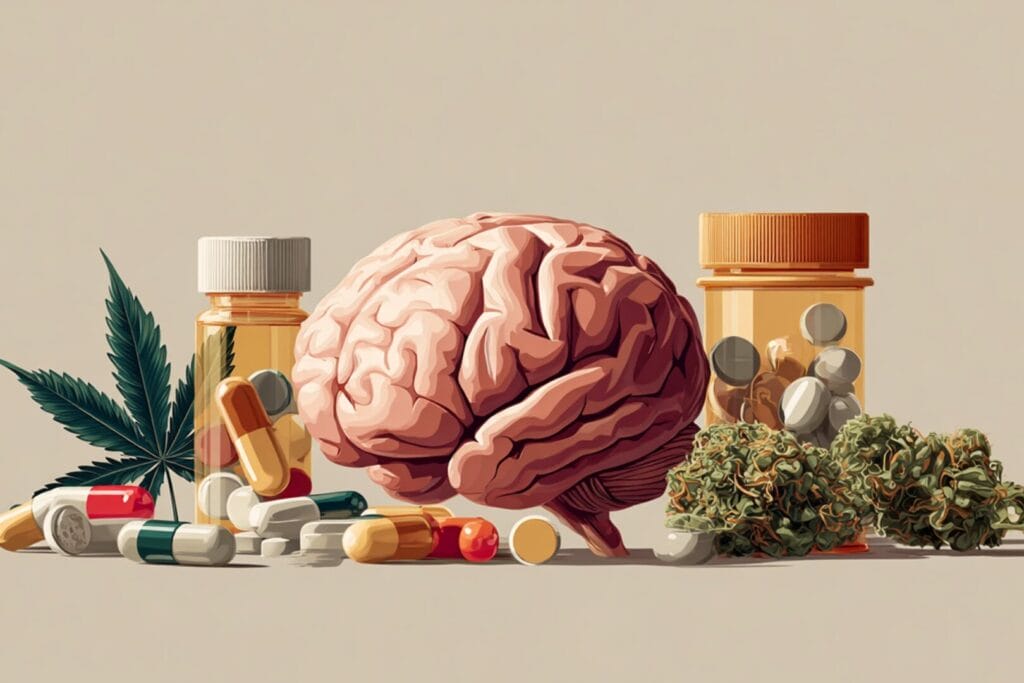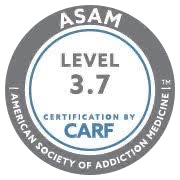Methamphetamine, or meth, is a dangerous stimulant that can destroy a person’s mental and physical health. Its effects can also extend to the skin. The detrimental effects of meth on the skin are among the most visible and often alarming signs of abuse.
The effects of meth on the skin aren’t just superficial. It indicates deeper health issues with potentially long-lasting consequences.
The Effects of Meth
Meth stimulates the central nervous system. It’s chemically similar to amphetamine. Meth is much more potent, however, with a higher abuse and addiction potential. Meth can be found in different forms, including crystalline and powder.
If someone uses meth, it increases their brain’s release of dopamine. Dopamine is linked with reward, pleasure, and motivation. The rapid release of dopamine triggered by meth is what causes the euphoric and intense high. The dopamine surge also disrupts normal neuron communication and has a range of stimulating effects on users.
Along with triggering the release of large amounts of dopamine in the brain, it also blocks its reuptake, so it stays in the brain longer. Chronic meth use can damage dopamine and serotonin neurons and lead to long-term deficits in these neurotransmitters.
Other effects that occur with meth use include:
- More energy and alertness.
- With prolonged use, anxiety, hallucinations, paranoia and violence can become common.
- Long-term meth use can cause memory loss and problems with concentration as well as overall declines in cognitive function.
- Chronic meth use can lead to significant brain damage and reduce the body’s ability to both produce and regulate dopamine.
- Meth suppresses appetite, leading to weight loss and malnutrition.
- Using meth can cause heart-related issues because it raises heart rate and blood pressure. This can put someone at greater risk of stroke or heart attack.
- Chronic meth use causes severe sleep disturbances and insomnia.
Meth is extremely addictive, leading to compulsive-drug-seeking behaviors, and long-term use can lead to mental issues, including psychosis. Over time, chronic use leads to physical decline, including a weakened immune system and organ damage, and addiction often has a major social and economic impact.
Why Is Methamphetamine So Addictive?
The potential for addiction to meth stems from its powerful, rapid effects on the brain’s reward system.
Key factors contributing to the addictiveness of meth include:
- The intense dopamine release creates a euphoric high and reinforces drug-taking behaviors.
- The effects of meth can last for a longer amount of time than other stimulants. The prolonged high and impact, which can last from 8 to 12 hours, increases the risk of repeated use and binge patterns. Binge patterns occur as users are consuming the drug continuously to try and maintain their high.
- When someone smokes or injects meth, it quickly reaches the brain, so the high is not only intense but is almost immediate. The rapid onset of euphoria is reinforcing, meaning a user is more likely to take meth again.
- Following repeated use, the brain becomes tolerant to the effects of meth. Then, larger amounts are needed to get the same impact.
- Using meth changes the structure and chemistry of the brain. It damages dopamine and serotonin neurons, making it harder for the brain to produce them naturally. The brain’s reward system can, therefore, make it hard to experience pleasure without the drug.
The Effects of Meth on the Skin
Meth can have numerous effects on the skin, including:
Dryness and Itchiness
Meth use can lead to severe dehydration because it increases sweating and can reduce the urge to drink water. Dehydration can make skin dry and itchy.
Acne and Sores
Meth use can cause users to develop acne because of how it affects the stress response, which increases sebum production. Sebum is an oil that clogs pores and leads to acne.
Meth users can also experience itching and something called formication. Formication is the sensation of bugs crawling under the skin, leading to scratching and skin picking. The result can be open sores and infections.
Formication occurs because of the effects of meth on the central nervous system, and a lack of sleep and poor nutrition often worsens it.
Poor Wound Healing
Meth use constricts blood vessels and reduces blood flow to the skin. This can then impair the ability of the skin to heal wounds and fight infections. At the same time, meth also weakens the immune system, so it’s harder for the body to recover from illnesses and skin injuries.
Acceleration of Aging
Chronic meth use makes the aging process happen faster, and that can lead to sagging skin and premature wrinkles.
There are several reasons for this.
One is the constant dehydration that often comes with meth use, causing the skin to lose elasticity. Meth users frequently neglect their diet, which can lead to vitamin and mineral deficiencies, and the drug increases the production of free radicals. These are damaging to skin cells and speed up aging.
Lesions and Infections
Open sores from constant scratching can get infected, especially since the immune function of meth users is often reduced.
Bacterial infections are common among meth users, including abscesses and cellulitis.
Scarring and Hyperpigmentation
Chronic picking and scratching on the skin can cause hyperpigmentation, the darkening of affected areas. Combined with infections and poor wound healing, this can result in significant scarring.
Overall Poor Health and Hygiene
It’s not uncommon for people who use meth to neglect their health and hygiene, worsening skin problems.
Poor hygiene can accumulate dirt and bacteria on the skin, increasing the risk of acne and infections. The overall poor health of meth users can also deteriorate skin quality.
Why Choose San Diego Detox?
Here at San Diego Detox, we understand that everyone’s journey to recovery is personal. That’s why we offer a tailored approach that combines luxurious comfort with professional, evidence-based medical care.
In addition to that, we’re led by medical professionals and addiction specialists who deliver treatments rooted in science and compassion.
Whether you’re looking for a detox program, residential treatment, holistic therapy, medication-assisted treatment, or dual diagnosis, you can count on us to provide:
- Evidence-based therapy
- Dedicate support from expert medical personnel
- A balanced approach to treatment that emphasizes balance and wellness
- Luxury amenities
- Addiction treatment that focuses on our values which are empathy, excellence, exclusivity, and engagement
Final Thoughts
Methamphetamine can have devastating effects on the skin, which is an indicator of the broader physical and mental toll this drug takes on users. From severe acne and sores to rapid aging and infections, the skin conditions linked to meth use are physically damaging, but also stigmatizing.
For anyone struggling with meth use, comprehensive treatment addressing the physical and psychological components of addiction is important. An effective, integrated treatment program can help with healing not only the skin but the underlying addiction itself.
Contact us today to learn more about our addiction treatment programs.







